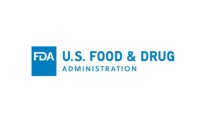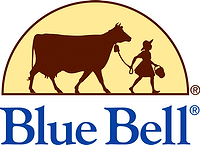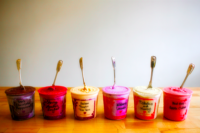FDA Tests 89 Ice Cream Production Facilities for Listeria and Salmonella

Today, the U.S. Food and Drug Administration (FDA) released a report on the agency’s inspection and environmental sampling of ice cream production facilities in 2016 and 2017. They tested for the presence of Listeria monocytogenes and Salmonella.
The sampling began in 2016 after approximately 16 ice cream product recalls were issued in the previous 3 years due to bacterial contamination. There was also one listeriosis outbreak linked to ice cream products in 2015.
FDA conducted inspections and environmental sampling of 89 ice cream production facilities in 32 states between September 2016 and August 2017. The agency chose to focus primarily on larger production establishments whose ice cream products reach more consumers.
Two environmental samples were collected at each of the 89 locations. The samples tested for Listeria monocytogenes consisted of at least 50 subsamples each, and the samples tested for Salmonella consisted of at least 100 subsamples each. The assignment did not include the testing of finished product.
Key findings of this assignment include:
- FDA detected Listeria monocytogenes in 19 of the 89 establishments (an establishment-based prevalence of 21.3 percent), and in 65 of the 5,295 subsamples (a subsample-based prevalence of 1.25 percent). The detected Listeria monocytogenes was found on non-food contact surfaces in 18 of the 19 establishments, and on food contact surfaces in the one other establishment where the pathogen was found.
- FDA detected Salmonella in one of the 89 ice cream production facilities (an establishment-based prevalence of 1.1 percent), and in one of the 7,004 subsamples (a subsample-based prevalence of 0.01 percent). The detected Salmonella was not detected on a food contact surface.
- With respect to the assignment inspectional outcomes, FDA classified 44 of the 89 inspections (49.4 percent) as “No Action Indicated (NAI),” meaning no objectionable conditions or practices were observed during the inspection; 39 inspections (43.8 percent) as “Voluntary Action Indicated (VAI),” meaning objectionable conditions or practices were observed and documented, but the operation should be able to address them without official action by FDA; and six inspections (6.7 percent) as “Official Action Indicated (OAI),” meaning objectionable conditions or practices warranting official action by FDA were observed and documented.
One facility—Working Cow Homemade Inc. of St. Petersburg, FL—had their food facility registration suspended in October 2018 as a result of FDA’s findings. In February 2019, it was announced that FDA had lifted that suspension after the firm changed its business model to exclude production and focus on storage and distribution of ice cream made by other manufacturers.
FDA says this sampling assignment was not conducted to ensure compliance with the Preventive Controls for Human Food rule established by the FDA Food Safety Modernization Act. Still, FDA says their findings underscore the need for commercial ice cream makers to ensure that they are controlling hazards in accordance with the rule.
FDA's Constituent Update
FDA's ice cream sampling report and findings
Sign up for Food Safety Magazine’s bi-weekly emails!
Subscribe to our podcast: Food Safety Matters!
Looking for a reprint of this article?
From high-res PDFs to custom plaques, order your copy today!





